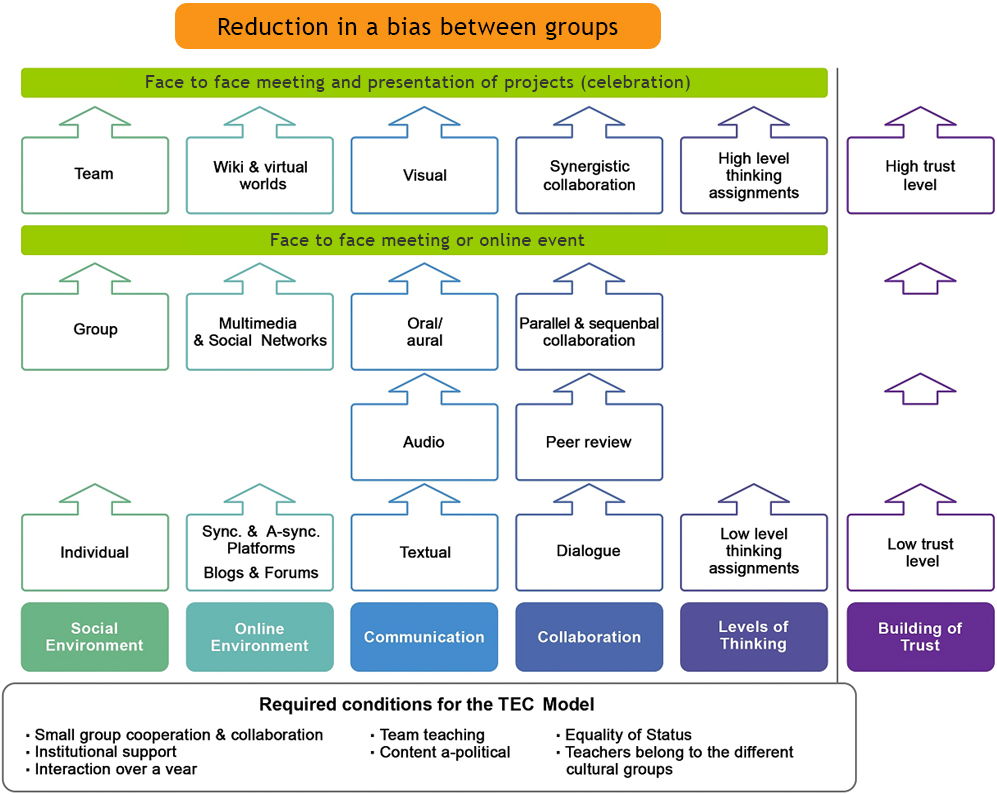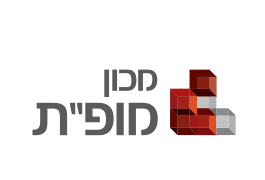An innovative educational model for a multicultural society
The TEC Model was developed by the founders of TEC Center, Dr. Miri Shonfeld, Dr. Asmaa N. Ganayem, and Dr. Elaine Hoter, to develop trust in an online collaborative learning environment. The model expands Allport’s Contact Hypothesis (Allport, 1954), whereby stereotyping and prejudice can be reduced by means of close, equal status contact between people from different groups, and pursuit of common interests and goals, sanctioned by institutional support. According to the TEC Model, contact between groups in conflict is primarily internet-based. The contact and trust between pupils or students develop gradually: initially they communicate via text, then voice, and finally face to face.
The basic components of the TEC Model are:
- Encounters. A year-long familiarization process in a non-competitive atmosphere, including gradual social acquaintance. Work on the course develops from asynchronous group work, to synchronous work with sound, synchronous work with sound and image (videoconferences in student courses), and, finally, a face to face encounter.
- Educational content and evaluation. The main course assignment (for students) is based on problem-based learning (PBL), which develops concurrently and in accordance with the level of the encounters and the studied topics. The students receive a list of topics, and can propose additional relevant ones, whose products and outcomes will be developed into study units, and serve all the teachers in the network. Evaluation of the group assignments, which is performed in accordance with indicators developed by the course lecturers, includes components pertaining to the collaboration between group members, and the grade comprises both a personal and a group component. A presentation of the group projects is held at the end of the academic year.
- Technology. This includes introduction to, use, and evaluation of current synchronous and asynchronous technological tools, including tools that enable contact between geographically and culturally distant participants, and group work. These tools are attractive to the next generation of teachers. The course introduces and focuses the methods for using and adapting internet tools for the studied content and online group work.
TEC: The other is me, and the other is still the other
The TEC Model aims to establish trust and connection by means of collaborative learning in small multicultural groups (six children from three population sectors in each group), and is based on gradual progress: from online communication that assures an equal platform for all, to an experiential face to face encounter. Throughout the school year, the children meet every week on a safe social network that has been developed and constructed especially for them, in order to generate a dialogue on multicultural topics that are relevant to their lives, and to introduce them to the “other”.
The intimate group encounters enable the children to build trust between them, and the pinnacle of the collaborative learning process is a face to face encounter, in which the children host their fellow learners at one of the participating schools. In order to implement the program and guide the children into a positive, educational dialogue, the teachers receive cultural diversity training, and undergo a process of familiarization and building trust with colleagues from the different population sectors. The TEC Model is currently being adopted and implemented in a number of countries around the world to promote a multicultural dialogue among children from different cultures.
During their collaborative learning, the pupils become acquainted with the traditional texts of their own heritage, as well as those of other religions and cultures. They are introduced to the similarities between the different religions on the studied topics, such as attitudes to the other/the elderly/music in the different groups from a human and emotional view of the other, and acceptance of the differences and similarities between them. The pupils acknowledge the potential contribution of every individual to another.
The TEC Model and its components, and trust-building stages throughout the school year, as published in the research literature around the world:


